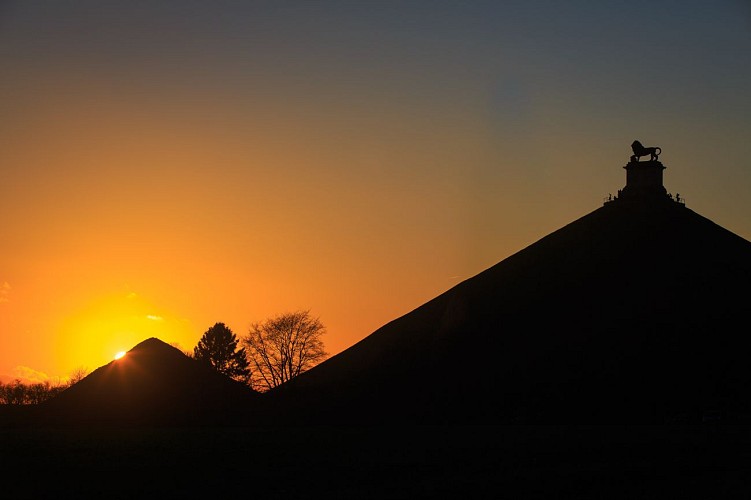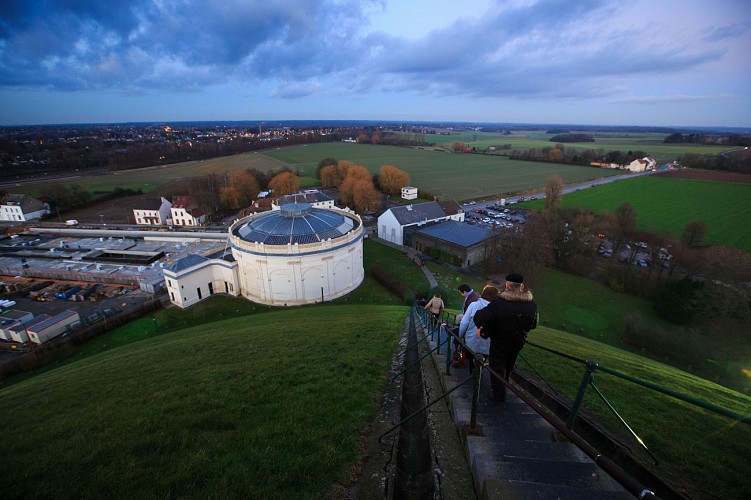Alert
Alerts
The Lion’s Mound of Waterloo



Description
The first monument commemorating the campaign in Belgium to be erected was the Lion’s Mound during the Dutch regime, between 1815 and 1826. The Lion erected on top of the mound, facing towards France, was made in the Cockerill factories of Seraing in the province of Liège. It was the largest cast iron piece ever to have been cast at the time, measuring 4.45m high, 4.50m long and weighing 28 tons.
On the evening of June 18, 1815, the fields around the Lion were strewn with 10.000 dead, 30.000 injured and thousands of horse carcasses. Like most other memorials erected on the Napoleon Trail, the Lion’s Mound is a burial mound which celebrates the fallen soldiers as heroes. However, the mound is more of a "knoll dripping with blood".
The Lion’s Mound came to symbolise more and more depending on the era and the origin of its visitors. It initially celebrated the victory of the British, Prussian, Dutch and “Belgian” victory. Today, such is the legend and cult status of Napoleon that the Mound symbolises the glorious and tragic destiny of the emperor. Rarely has a monument to the victors fed so much the legend of the defeated".
Technical Information
Altimetric profile
IGN cards
Data author



